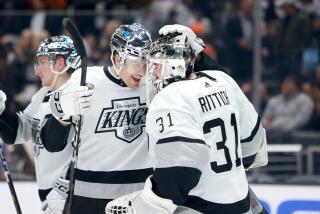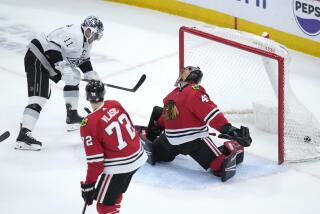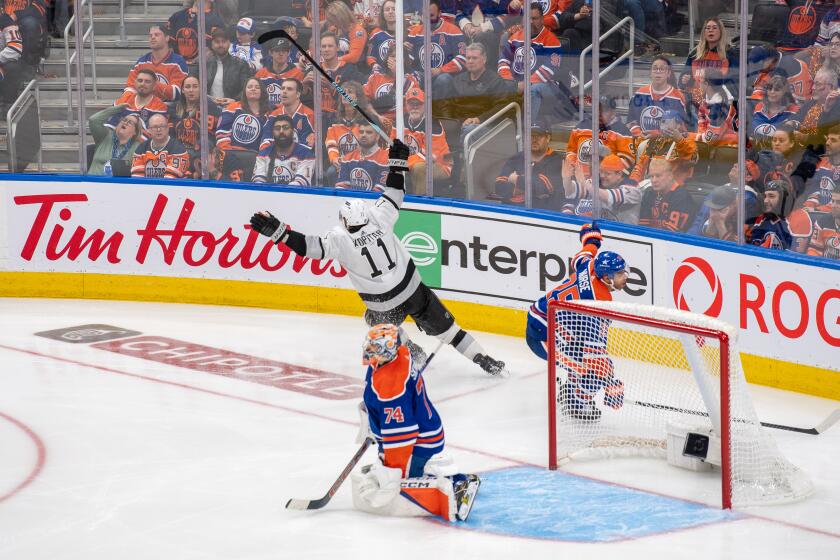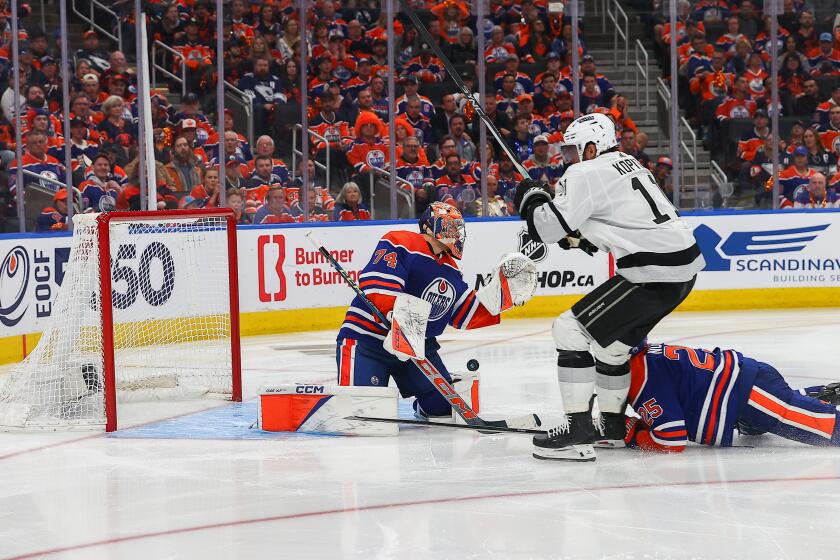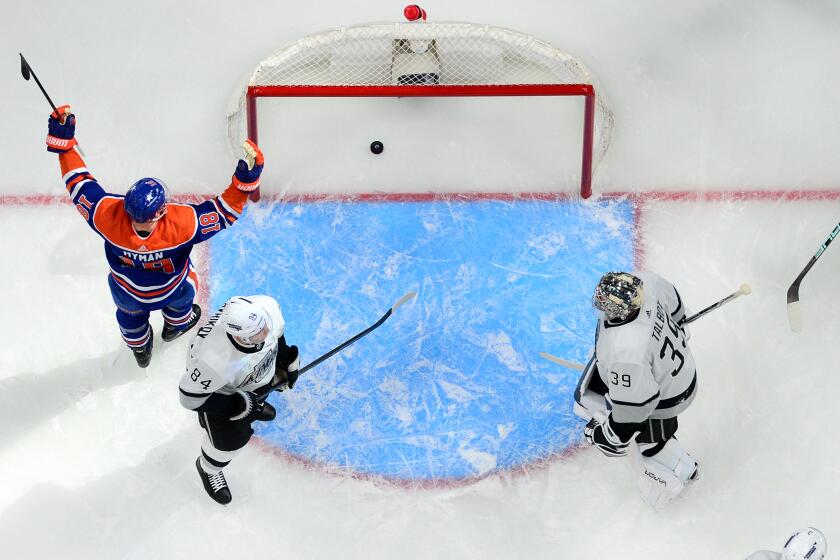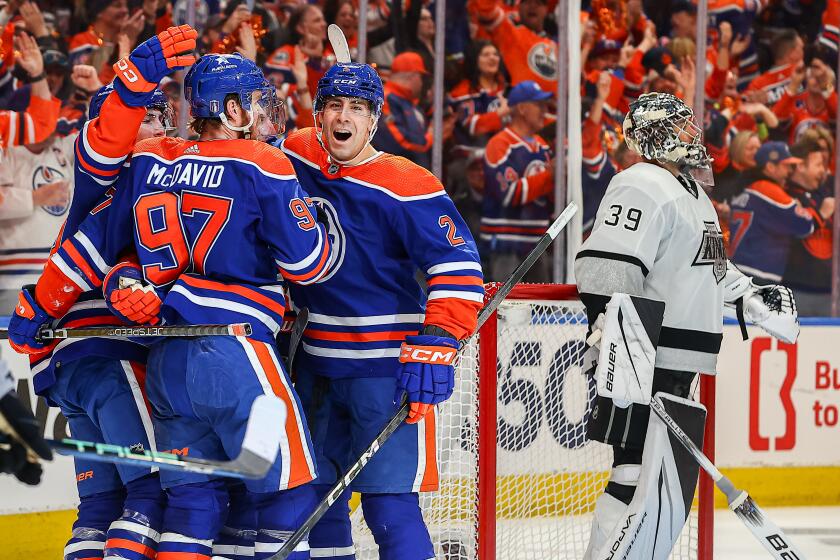Analysis: Breaking down the Kings’ first half and what they need to contend for the Cup
The dominant 200-foot game of Anze Kopitar. The energetic three-zone brilliance of Drew Doughty. The crab-like agility of Jonathan Quick.
If the Kings were a rock band, they would be a power trio. They are more than Kopitar, Doughty and Quick, but few teams in the NHL can roll out such game-changing players at each position. Kings coach John Stevens recognized that recently when asked about his leaders.
“When they play like that, I think it only allows our young players to be more confident and better players,” Stevens said.
The eventual return of center Jeff Carter from injury will add to that dynamic. But do the Kings have enough around their base to go deep into the playoffs? And can they add another piece to help that effort?
Here’s a closer look at those questions and how the first half unfolded:
Forwards
The rebound seasons of Kopitar and Dustin Brown were the story offensively in the first few months. Both already have surpassed their goal totals from last season. Brown’s 19-plus minutes of ice time per game are his most in five seasons.
Tyler Toffoli also has stormed back with 18 goals and looked like a puck-magnet again. What’s remarkable is how the Kings have averaged about half a goal more per game without Carter, their leading scorer with 32 goals last season.
Credit Adrian Kempe for looking like a bona-fide top-six NHL forward. The depth — a major question going into this season — has been tested, with slow production from Tanner Pearson and Alex Iafallo. Trevor Lewis, one of their better forecheckers, has 10 goals, but the bottom-six unit still has a defensive-first identity summed up by Doughty’s description of center Nick Shore.
“A lot of people don’t realize how good Shoresy is,” Doughty said. “You have to have really good hockey IQ to understand how good of a player that kid is.”
Defensemen
Doughty is reunited with Jake Muzzin in a formidable top pairing. Alec Martinez also plays big minutes while Derek Forbort, Christian Folin and Kurtis MacDermid round out the regular group that’s stuck to Stevens’ edict of not sacrificing defense in the name of offense.
That’s resulted in some breakdowns when the Kings face bigger, faster-skating teams that test rookies such as MacDermid and Oscar Fantenberg. But their deficiencies are made up by Quick and Darcy Kuemper, who helped the Kings lead the NHL with a 2.36 goals-against average.
Goaltenders
The only question is how the Kings balance riding Quick without playing him too much. Quick started 34 of the first 42 games, including eight straight going into the week off, and he’s on track for a career-high 41 wins. More telling is his .926 save percentage, his best since his .929 percentage in 2011-12.
The Kings’ major flaw is their tendency to rely on Quick too much.
“Yeah, we do rely on Jonny an awful lot, but we’re allowed to,” Stevens said. “He’s a great goalie.”
Kuemper has yet to take a regulation loss with a 5-0-3 record, 2.11 goals-against average and .934 save percentage. He is essentially playing for his next contract, having signed a one-year deal in the summer.
Special teams
The penalty killing unit leads the NHL at 87.5 percent, with only 18 goals allowed in 144 times shorthanded. It starts with Quick but the Kings employ up to eight forwards on their kill under first-year assistant coach Dave Lowry.
The power play ranks in the lower third, both in percentage and opportunities; the Kings are among the league leaders in six-on-five goals, or goals with an extra attacker.
Injuries
The team has not put a timetable on Carter’s return from a lacerated ankle tendon but it is believed to be pegged for late February or early March.
Needs
A top-four caliber defenseman would go a long way toward steeling the Kings for the divisional and conference race.
Follow Curtis Zupke on Twitter @curtiszupke
More to Read
Go beyond the scoreboard
Get the latest on L.A.'s teams in the daily Sports Report newsletter.
You may occasionally receive promotional content from the Los Angeles Times.
